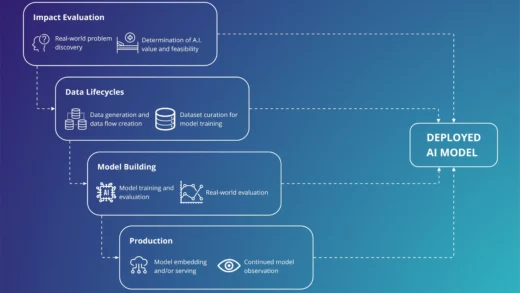As the UK healthcare sector strives to reduce its environmental impact, sustainable procurement is emerging as a key area of focus. By making informed, eco-friendly purchasing decisions, healthcare organisations can contribute to a greener future whilst also meeting the demands of their patients. In this article, we will explore how data analysis can play a vital role in driving sustainable procurement practices within healthcare.
Identifying Environmentally Friendly Suppliers
Using procurement and sales data, healthcare organisations can assess the environmental credentials of their suppliers. By analysing factors such as carbon emissions, waste management, and resource efficiency, organisations can create a list of preferred suppliers that align with their sustainability goals.
Here are some strategies to gather this information:
- Supplier Self-Assessment Questionnaires: Developing and distributing a supplier self-assessment questionnaire (SAQ) can help collect information on their environmental practices, including carbon emissions, waste management, and resource efficiency. This approach enables suppliers to share their sustainability data and initiatives, which can be compared and evaluated against your organisation’s goals.
- Supplier Environmental Reporting: Many suppliers may already have publicly available reports on their environmental performance, such as annual sustainability reports or Corporate Social Responsibility (CSR) reports. These documents often provide data on carbon emissions, waste management, and resource efficiency, allowing you to evaluate their sustainability efforts.
- Public Databases and Certifications: There are numerous public databases and certification schemes that provide information on suppliers’ environmental performance. Examples include the Carbon Disclosure Project (CDP), the Global Reporting Initiative (GRI), and the ISO 14001 environmental management system certification. By accessing these resources, you can gain insights into suppliers’ environmental data and practices.
- Direct Communication and Collaboration: Engaging in direct communication with suppliers and encouraging collaboration can lead to the sharing of environmental data. Open dialogue and transparent relationships with suppliers can facilitate the exchange of information related to carbon emissions, waste management, and resource efficiency.
- Third-Party Audits: Conducting or commissioning third-party audits of suppliers can provide an independent assessment of their environmental performance. These audits can uncover valuable data on carbon emissions, waste management, and resource efficiency, offering an unbiased evaluation of suppliers’ sustainability practices.
- Industry Associations and Partnerships: Collaborating with industry associations, government agencies, and non-governmental organisations (NGOs) can also provide access to valuable data on suppliers’ environmental performance. These organisations often have access to industry-specific databases or resources that can help you gather the required information.
By using a combination of these strategies, healthcare organisations in the UK can collect data on carbon emissions, waste management, and resource efficiency for their suppliers. This information can then be used to evaluate and select suppliers that align with the organisation’s sustainability goals.
Product Life Cycle Assessment
Data analysis can also help healthcare organisations evaluate the environmental impact of products throughout their life cycle. By examining procurement data, organisations can identify products that have a lower carbon footprint, generate less waste, and require fewer resources to produce, ultimately promoting more sustainable purchasing decisions.
Obtaining data to identify products with a lower carbon footprint, generating less waste, and requiring fewer resources to produce involves sourcing information from various channels. Here are some approaches to gather this data:
- Product Environmental Declarations: Many manufacturers provide product environmental declarations, such as Environmental Product Declarations (EPDs) or Product Sustainability Data Sheets, which include information about the product’s carbon footprint, waste generation, and resource usage throughout its lifecycle. Reviewing these documents can help identify environmentally friendly products.
- Supplier Collaboration: Engaging in open communication with suppliers can lead to the sharing of valuable environmental data about their products. Requesting specific data related to carbon footprint, waste generation, and resource efficiency can help you identify and evaluate products that meet your sustainability criteria.
- Life Cycle Assessment (LCA) Databases: There are several LCA databases available, such as the European Platform on LCA or the US Environmental Protection Agency’s (EPA) LCA resources. These databases can provide comprehensive environmental impact data, including carbon footprint, waste generation, and resource efficiency, for a wide range of products.
- Certifications and Ecolabels: Products with environmental certifications or ecolabels, such as the EU Ecolabel, the Carbon Trust label, or the Cradle to Cradle Certified™, often meet specific criteria related to carbon footprint, waste generation, and resource efficiency. Researching products with these certifications or labels can help identify sustainable options.
- Industry Associations and Partnerships: Collaborating with industry associations, government agencies, and non-governmental organisations (NGOs) can provide access to valuable data on product sustainability. These organisations often have access to industry-specific databases or resources that can help you gather the required information.
- Conducting Your Own LCA: If data on the environmental impact of a specific product is unavailable or insufficient, you can consider conducting your own life cycle assessment. Although this may require time and resources, it can provide you with detailed information about the product’s carbon footprint, waste generation, and resource efficiency.

Life Cycle Assessment (LCA)
Conducting a Life Cycle Assessment (LCA) involves following a systematic process to evaluate the environmental impacts associated with all stages of a product’s life cycle, from raw material extraction to end-of-life disposal. The International Organization for Standardization (ISO) has developed a set of standards for LCA, specifically ISO 14040 and ISO 14044. The general principles required to conduct your own LCA include:
- Goal and Scope Definition: Clearly define the goal and scope of the LCA. This includes outlining the reasons for conducting the LCA, the intended applications, and the target audience. The scope should cover system boundaries, functional units, reference flows, allocation methods, impact categories, and any assumptions or limitations.
- Inventory Analysis: Collect data on all inputs and outputs associated with the product’s life cycle stages, including raw materials, energy, water, emissions, and waste. This step is also known as the Life Cycle Inventory (LCI). Data can be obtained from primary sources (e.g., suppliers, manufacturers) or secondary sources (e.g., LCA databases, published literature). Ensure that the data is consistent, accurate, and representative of the studied system.
- Impact Assessment: Translate the inventory data into potential environmental impacts using characterisation factors. This step is known as the Life Cycle Impact Assessment (LCIA). Common impact categories include climate change, ozone depletion, acidification, eutrophication, resource depletion, and human toxicity. Choose appropriate impact assessment methodologies based on the goal and scope of the LCA.
- Interpretation: Evaluate and interpret the results of the LCA, identifying the most significant environmental impacts, hotspots, and opportunities for improvement. Perform sensitivity and uncertainty analysis to assess the robustness of the results. Document the conclusions and recommendations based on the findings, while considering the goal and scope of the LCA.
- Critical Review (optional but recommended): A critical review, ideally conducted by an independent third-party expert, helps ensure the quality, consistency, and reliability of the LCA. The review process assesses the methodology, data quality, assumptions, and interpretation of results, providing feedback for improvements and increasing the credibility of the study.
By following these general principles, you can conduct a comprehensive and reliable LCA that provides valuable insights into the environmental impacts of a product throughout its life cycle. This information can then be used to inform decision-making, improve product design, and support more sustainable procurement practices.
Public Databases and Certifications
There are numerous public databases and certification schemes that provide information on suppliers’ environmental performance. Examples include the Carbon Disclosure Project (CDP), the Global Reporting Initiative (GRI), and the ISO 14001 environmental management system certification. By accessing these resources, you can gain insights into suppliers’ environmental data and practices.
Promoting Circular Economy Principles
- Data analysis can help healthcare organisations uncover opportunities to implement circular economy practices within their procurement processes. By embracing these principles, organisations can minimise waste, extend product lifecycles, and reduce the consumption of raw materials. Here are some ways data analysis can support circular economy initiatives:
4.1. Identifying Reusable or Repurposable Products: Analysing procurement and sales data can reveal patterns of product usage, enabling organisations to identify items that are suitable for reuse, refurbishment, or repurposing. By extending the life of these products, healthcare organisations can reduce waste and the demand for new products, contributing to a more sustainable procurement approach.
4.2. Tracking Product Lifecycles: Effective data management can enable organisations to track the lifecycle of products, from procurement to end-of-life. This information can help identify opportunities for product refurbishment or recycling, further reducing waste and resource consumption. Implementing a robust product lifecycle management (PLM) system can support these efforts.
4.3. Assessing Supplier Circular Economy Practices: Evaluating suppliers based on their circular economy practices is another way to promote sustainability in procurement. By analysing procurement data, healthcare organisations can identify suppliers that offer take-back schemes, remanufactured products, or those that incorporate recycled materials into their production processes.
4.4. Measuring and Monitoring Circular Economy Performance: Data analysis can assist healthcare organisations in measuring and monitoring their progress towards circular economy goals. By establishing key performance indicators (KPIs) related to waste reduction, product reuse, and recycling, organisations can track their progress and make data-driven decisions to continuously improve their circular economy initiatives.
4.5. Encouraging Collaboration and Knowledge Sharing: Sharing data and best practices related to circular economy initiatives within the healthcare sector can foster collaboration and drive continuous improvement. Partnering with other organisations, industry associations, and government agencies can promote the adoption of circular economy principles and contribute to a more sustainable procurement approach
Tracking and Reporting Sustainability Performance
Data analysis is essential in measuring the success of sustainable procurement initiatives, allowing healthcare organisations to track their progress and report on their environmental performance. This section explores the various aspects of tracking and reporting on sustainability performance:
5.1. Establishing Key Performance Indicators (KPIs): Develop a set of KPIs to measure the success of your sustainable procurement initiatives. These indicators may include metrics related to carbon emissions, waste reduction, water usage, energy efficiency, and the proportion of environmentally friendly products or suppliers. KPIs should be clear, measurable, and aligned with your organisation’s sustainability goals.
5.2. Monitoring and Data Collection: Implement systems and processes to collect and store data related to your sustainable procurement KPIs. This may involve using software solutions, conducting regular audits, or collaborating with suppliers to gather necessary information. Ensure that the data collected is accurate, reliable, and up-to-date.
5.3. Data Analysis and Insights: Regularly analyse the collected data to identify trends, patterns, and opportunities for improvement. Use data analysis techniques to uncover the most significant drivers of your organisation’s environmental performance, assess the effectiveness of implemented initiatives, and inform future decision-making.
5.4. Benchmarking and Goal Setting: Compare your organisation’s sustainability performance against industry benchmarks or competitors to identify areas where improvements can be made. Use this information to set realistic and achievable goals for your sustainable procurement initiatives, driving continuous improvement and fostering a culture of sustainability.
5.5. Reporting and Communication: Transparently report on your organisation’s sustainability performance, both internally and externally. Regular reporting can increase accountability, demonstrate progress, and help build trust among stakeholders, including employees, suppliers, and customers. Consider sharing your results through annual sustainability reports, websites, or other communication channels.
5.6. Engaging Stakeholders: Involve key stakeholders, such as employees, suppliers, and customers, in your organisation’s sustainability journey. Encourage feedback and collaboration to ensure that your sustainable procurement initiatives remain relevant, effective, and well-supported by all parties involved.
Tracking and reporting on sustainability performance is a critical component of implementing sustainable procurement practices in the UK healthcare sector. By establishing clear KPIs, collecting and analysing data, and communicating progress, healthcare organisations can drive continuous improvement, promote transparency, and foster a culture of sustainability.
In conclusion, data analysis plays a pivotal role in driving sustainable procurement practices within the UK healthcare sector. By harnessing the power of data, organisations can identify and select environmentally responsible suppliers, choose products with lower environmental impacts, promote circular economy principles, and effectively track and report their sustainability performance. Implementing these data-driven strategies not only contributes to a greener and more resource-efficient healthcare system but also helps organisations meet their environmental goals, respond to increasing regulatory pressures, and satisfy the growing demand for sustainable practices from stakeholders. As the UK healthcare sector continues to strive towards a more sustainable future, leveraging data analysis will remain an essential tool in guiding decision-making, driving continuous improvement, and fostering a culture of sustainability.
Further Reading
By exploring these UK-based resources, healthcare organisations can gain valuable insights and support in implementing sustainable procurement practices and reducing their environmental impact.
- NHS Sustainable Development Unit (SDU): The SDU supports the National Health Service (NHS) in England in its efforts to embed sustainable development across its operations, including sustainable procurement. Their website offers guidance, case studies, and tools related to sustainable procurement practices. Website: https://www.sduhealth.org.uk/
- The Carbon Trust: The Carbon Trust is a UK-based organisation that provides expert advice, certification, and support to businesses, governments, and organisations in their pursuit of a more sustainable future. They offer resources and tools to help organisations reduce their carbon footprint and improve procurement practices. Website: https://www.carbontrust.com/
- The Chartered Institute of Procurement & Supply (CIPS): CIPS is a global organisation based in the UK that provides resources, guidance, and support for procurement and supply management professionals. They offer a wealth of resources on sustainable procurement, including best practices, case studies, and educational materials. Website: https://www.cips.org/
- WRAP (Waste & Resources Action Programme): WRAP is a UK-based organisation that works with businesses, governments, and communities to improve resource efficiency and reduce waste. They offer guidance on circular economy principles, sustainable procurement, and waste reduction strategies. Website: https://www.wrap.org.uk/
- The Centre for Sustainable Healthcare (CSH): The CSH is a UK-based organisation that aims to help the healthcare sector reduce its environmental footprint and improve the sustainability of healthcare practices. They provide resources, guidance, and training on sustainable healthcare, including procurement practices. Website: https://sustainablehealthcare.org.uk/
- The Environment Agency: The Environment Agency is a UK government organisation that provides information and resources on environmental issues, including waste management, pollution control, and sustainable practices. Their website offers guidance on sustainable procurement and environmental legislation. Website: https://www.gov.uk/government/organisations/environment-agency
Funding
- Innovate UK: Innovate UK is a government organisation that provides funding and support for innovative projects, including those related to sustainability and the circular economy. Funding opportunities are usually provided through regular competitions and calls for proposals. Website: https://www.gov.uk/government/organisations/innovate-uk
- The National Lottery Community Fund: The National Lottery Community Fund provides grants to projects that improve communities and people’s lives, including projects focused on sustainability and environmental initiatives. Healthcare organisations may be eligible for funding if their projects align with the fund’s priorities. Website: https://www.tnlcommunityfund.org.uk/
- The European Regional Development Fund (ERDF): Although the UK has left the EU, there may still be funding opportunities available through the ERDF for organisations working on sustainable projects, including those focused on procurement and resource efficiency. The ERDF focuses on economic growth, innovation, and environmental sustainability. Website: https://www.gov.uk/guidance/england-2014-to-2020-european-structural-and-investment-funds
- Energy Saving Trust: The Energy Saving Trust offers funding and support for projects aimed at reducing energy consumption and carbon emissions. They provide grants and financing options for various sectors, including healthcare, to implement energy-saving and sustainable practices. Website: https://energysavingtrust.org.uk/
- Local government funding and initiatives: Local authorities in the UK may provide funding or support for projects focused on sustainability and environmental initiatives. Check with your local council to explore any available funding opportunities or initiatives related to sustainable procurement and resource efficiency.








